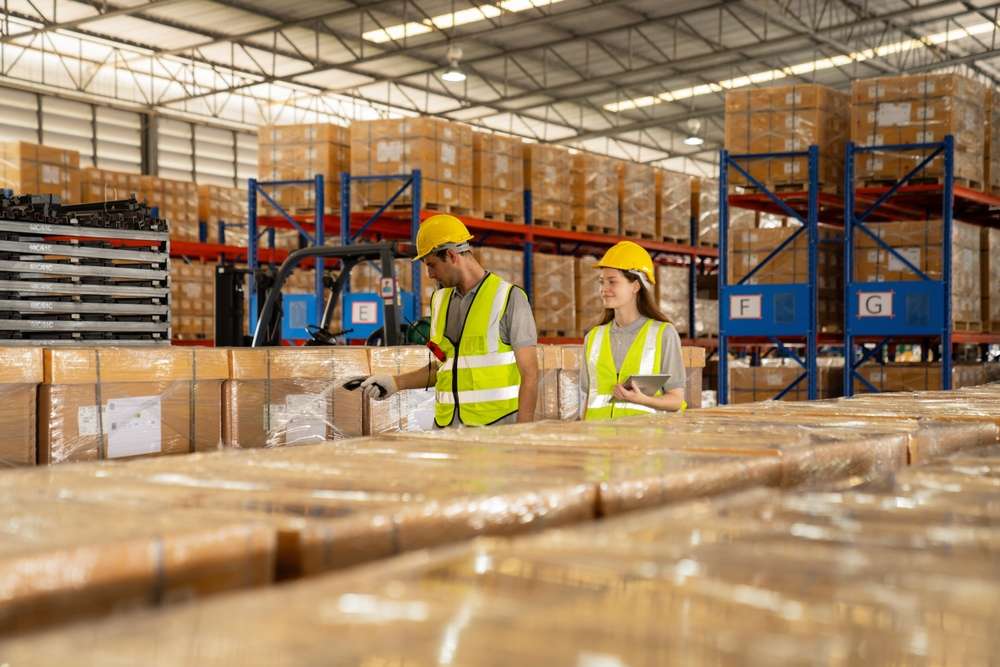How Modern Warehousing Solutions Enhance Logistics Efficiency
The logistics landscape has undergone a remarkable transformation in recent years, with warehousing at the center of this evolution. Modern warehousing solutions have become critical components in supply chain management, offering businesses unprecedented opportunities to streamline operations, reduce costs, and meet growing customer expectations. As global commerce continues to expand and consumer demands shift toward faster delivery times, the implementation of advanced warehousing technologies and methodologies has become essential for maintaining competitive advantage in today's market.

The Evolution of Modern Warehousing Solutions
Traditional warehousing once consisted simply of storing goods until they were needed. Today’s modern warehousing solutions encompass sophisticated systems designed to optimize every aspect of inventory management. Automated storage and retrieval systems (AS/RS) now allow for high-density storage configurations that maximize available space while minimizing retrieval times. These systems work in tandem with warehouse management software (WMS) that provides real-time inventory visibility, eliminating guesswork and reducing human error. The integration of IoT sensors throughout facilities enables constant monitoring of environmental conditions, ensuring product integrity while collecting valuable operational data for continuous improvement.
How Technology Drives Warehouse Optimization
Technology serves as the backbone of modern warehousing efficiency. Advanced robotics and automated guided vehicles (AGVs) now handle repetitive tasks like picking, packing, and transporting items throughout warehouse facilities. These technologies not only increase accuracy rates but also dramatically improve throughput speeds. Voice-directed and light-directed picking systems guide warehouse staff through optimal picking routes, reducing travel time and increasing productivity by up to 35%. Meanwhile, artificial intelligence and machine learning algorithms continuously analyze operations data, identifying bottlenecks and suggesting process improvements that would be impossible to detect through manual observation alone.
Improving Logistics Efficiency Through Strategic Warehouse Design
The physical layout and design of modern warehouses play a crucial role in logistics efficiency. Strategic warehouse designs now incorporate principles like slotting optimization, which places fast-moving products in easily accessible locations while relegating slower-moving inventory to less premium spaces. Cross-docking facilities eliminate the need for long-term storage altogether for certain products, allowing goods to flow directly from receiving to shipping with minimal handling. Zone-based picking strategies segment warehouse operations to reduce congestion and improve workflow, while ergonomic workstation designs reduce employee fatigue and increase productivity. These design elements work together to minimize unnecessary movement and handling, resulting in significantly faster order fulfillment.
Benefits of Modern Warehouses for Supply Chain Integration
Modern warehousing solutions deliver exceptional value by seamlessly integrating with broader supply chain operations. Cloud-based warehouse management systems now communicate in real-time with transportation management systems, allowing for synchronized scheduling that minimizes dock congestion and vehicle idle times. Advanced forecasting tools integrated into warehouse systems help anticipate demand fluctuations, enabling more accurate inventory positioning and reducing both stockouts and overstock situations. Third-party logistics providers (3PLs) with modern warehouse capabilities offer businesses flexible capacity options without requiring capital investment, allowing operations to scale up or down based on seasonal demands or growth patterns.
Sustainability Advantages of Advanced Warehousing Solutions
Today’s modern warehousing solutions also address growing environmental concerns while delivering operational benefits. Energy-efficient lighting systems with motion sensors reduce electricity consumption by up to 80% compared to traditional warehouse lighting. Automated climate control systems maintain optimal conditions while minimizing energy usage through predictive modeling. Package optimization software reduces material waste by calculating the ideal box size for each shipment, while automated sorting systems enable efficient recycling of packaging materials. Many modern facilities now incorporate renewable energy sources like solar panels to further reduce their carbon footprint, appealing to environmentally conscious consumers and businesses alike.
Cost-Benefit Analysis of Modern Warehousing Implementation
Implementing modern warehousing solutions requires significant upfront investment but delivers substantial long-term returns. A fully automated warehouse management system typically costs between $100,000 and $1 million depending on warehouse size and complexity, yet can reduce labor costs by 30-40% while increasing accuracy rates to over 99.9%. Automated guided vehicles (AGVs) range from $25,000 to $100,000 per unit but can operate continuously without breaks or shift limitations. The implementation timeline for comprehensive warehouse modernization generally spans 6-18 months, with ROI typically achieved within 2-3 years.
| Technology Solution | Implementation Cost Range | Typical ROI Timeframe | Efficiency Improvement |
|---|---|---|---|
| Warehouse Management System | $100,000 - $1,000,000 | 12-24 months | 15-30% throughput increase |
| Automated Storage & Retrieval | $500,000 - $3,000,000 | 24-36 months | 40-60% space utilization improvement |
| Robotics & AGVs | $250,000 - $2,000,000 | 18-30 months | 30-40% labor cost reduction |
| IoT & Analytics Suite | $50,000 - $200,000 | 12-18 months | 10-20% operational cost reduction |
| Voice/Light Picking Systems | $75,000 - $300,000 | 12-24 months | 25-35% picking accuracy improvement |
Prices, rates, or cost estimates mentioned in this article are based on the latest available information but may change over time. Independent research is advised before making financial decisions.
Future Trends in Warehousing and Logistics Efficiency
The evolution of warehousing continues at a rapid pace, with several emerging technologies poised to further transform the industry. Autonomous mobile robots (AMRs) are becoming more sophisticated and affordable, allowing even mid-sized warehouses to benefit from automation. Augmented reality picking systems that overlay digital information onto physical environments are showing promise for improving worker efficiency while reducing training time. Blockchain technology is beginning to enhance traceability throughout the supply chain, ensuring product authenticity and improving recall management. As these technologies mature and become more accessible, warehousing will increasingly become a strategic advantage rather than simply a necessary operational cost.
The transformation of warehousing from static storage facilities to dynamic, technology-driven operations centers represents one of the most significant developments in modern logistics. By embracing these advanced solutions, businesses can achieve unprecedented levels of efficiency, accuracy, and customer satisfaction while building more resilient and responsive supply chains for the future.




